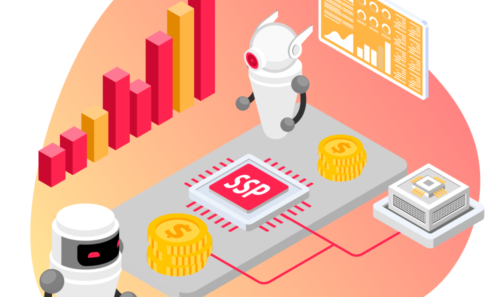How To Find the Best Demand Partners?
Q4 has started. Are you ready? All preparations made? Is the best content ready to go? Have all the settings on the ad server been double-checked? Have you made your final touches? Is your pricing strategy ready? Deals buttoned up? Good! So the last piece of the puzzle should be discussed here. Demand partners. Also known as providers, vendors etc., or all those whose work involves delivering as much demand as possible. Why is this important?
Table of contents
How to increase CPM with Demand Partners
Quality not quantity
Global Partners and Local Players
Try to understand what kind of publisher you are
The transaction has two sides of interest
Demand Partners and their influence on Core Web Vitals
A few weeks ago I took part in a discussion on Reddit where someone asked (and I quote) – ‘Hi Guys, do you know, does having a Google AdSense on my website guarantee the highest CPMs possible?’ The answer was simple. NO. Of course, having AdSense guarantees access to the broadest demand stream; but because it is not controllable, we can’t be sure that everything will be done in an optimal way.
How to increase CPM with Demand Partners
That is why when clients ask me how to increase CPMs, I say – with PRESSURE. Programmatic is based on an auction buying model. Some of you could say that this is an obvious thing, but we also have to understand the nature of auctions. Try to remember any film you have watched where the action took place in the auction house. Any object that is offered in such a place achieves the highest price when there are many active participants in the auction.
The same thing happens in Programmatic. That is why having a lot of auction participants (bidders) and as a result, more pressure in the auction is the most effective way of increasing the CPMs.
Quality not quantity
And here we are getting closer to the core issue. If during the auction we had many participants but none of them had any real money in their bank accounts, then all the auctions would have been fiction. That is why those people are carefully checked before the auction. Only those who have money – pay.
This is another analogy to our Programmatic world. Imagine that your web inventory is that object from the auction house. What you want is to have as many participants in the buying process as possible; and what is even more important – you want only those who can offer you the highest price.
Global Partners and Local Players
Now let’s talk about how to find them. One of the geo classifications of the demand partners splits them up into two groups – global players, and local players (who have the potential to grow and develop). And although each of us knows global partners, local players are often forgotten. That is a common mistake because these small, local partners sometimes have the best offer you can get. This is because they work with the same recipients as you do; and they know them well.
Global players have massive demand streams but they don’t have sales offices around the world. Of course, they can deliver some campaigns to your audience but if your users are not from the Tier 1 geo (US, UK, Canada, Australia) they often target their recipients regionally; and probably you will not be able to reach high CPMs based on these broadly targeted campaigns. That is why I always encourage clients to keep their eyes open for local companies operating in one but clearly defined field. So the next time when some unknown agency knocks on your door – don’t hesitate to talk to them. You don’t have to give them access to all your inventory. Just make a deal on a small part of it, and test them. You may be really surprised about their performance.

Try to understand what kind of publisher you are
The next thing is: the offer. There are a lot of partners convinced of their magical possibilities and completeness. The key is to understand what type of Publisher you are; and this extends to the users visiting your website. For example, if you are the owner of a dynamically developing application – don’t focus only on the best-known demand providers like Google, Xandr, Magnite and so on. Try to find a company that is an expert in the monetization of apps like AdColony. For those big players – apps are only one of many; for the smaller players, apps are the be all and end all of everything.. I’m sure many of you understand the sentiment.
You can think of it in many ways – for example, if you have 80% mobile traffic, don’t hesitate to focus on partners who are experts when it comes to monetizing mobile audiences. To the list of Index Exchange, OpenX, Pubmatic, try to add YOC (applies to the Europe region). Of course, this is only an example. In other words – focus only on the things that matter.
The transaction has two sides of interest
Now I will show you a different perspective. In order to have a good relationship with the partner and have satisfying results, you have to understand that there are two sides to the deal. You can’t only look at your business goals; but also understand the expectations of your partner. Let me give you an example.
Some time ago, I was negotiating with one of our partners the terms of our cooperation. They had delivered pretty good results, having first and foremost unique demand, but also 3rd party demand from well-known demand providers. The only thing they required was a guarantee that they would be the only monetizing company on the placement. This bothered me. I couldn’t add anything else to improve the performance because of their exclusiveness. When I asked them about it, the answer was pretty surprising. They told me that they were offering my placement to the advertisers they work with, guaranteeing this exclusiveness for higher CPMs and this unique demand. And it transpired that they were negotiating the direct deal on my behalf. A deal that I would normally never make. Do you see?
Demand Partners and their influence on Core Web Vitals
And the last tip. During all the searching, testing and implementing of a new partner, you have to remember that all additional scripts and tags, and the library, have almost always an impact on your website performance. Since 2021, Google has updated its search algorithms in order to take into account Core Web Vitals. Having said that, you have to pay attention to the additional package sizes which will be requested every time a page is about to load.
My suggestion is to openly ask the partner what impact their technology will have on this matter. (Some of them rose to the occasion themselves, like Just Premium, sending blueprints regarding this search algorithm update). This type of question should be asked, especially to those partners whose script packages can significantly extend page loading (e.g. Header Bidding technology providers). Also, I would direct this question to partners who provide the so-called rich media formats because they can affect two of the three Core Web Vitals – CLS (Cumulative Layout Shift) and LCP (Largest Contentful Paint). Lowering values of Core Web Vitals can affect your ranking position in search.
Partners are the key to monetizing your inventory
Let’s sum up. To increase the CPMs, you have to understand the rules of Programmatic. Knowing that it is an auction buying model, you have to remember about all aspects. Having as many appropriate(!) partners as possible is the key to monetizing your inventory to its fullest potential. Don’t hesitate to try local partners who often know your audience better than global players. Focus on the things that matter – know your audience and adjust your partners to it and not the opposite. And finally, remember that good positioning in search engines is sometimes more important than the best partners; so remember to actively evaluate your website performance based on Core Web Vitals.







